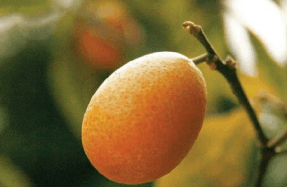SPECIAL REPORT Renew Your Body


In Star Wars, Luke Skywalker’s critically injured body is regenerated in a “bacta tank”. You might not be out fighting aliens but your body cops a regular beating from environmental toxins, modern diets, stress, infections, negative emotions and other figurative baddies.
Four years ago, Jennifer Green (real name protected for legal reasons) was bedridden for months after exposure to neurotoxic chemicals. Formerly fit and healthy, Green developed potentially fatal damage to all her body systems, including liver and brain tumours, neurological impairment, gallstones, chronic fatigue, skin lesions, a compromised immune system, dental damage and reduced fertility. Determined to recover, she healed her body using largely natural therapies.
In The Miracle of Regenerative Medicine (2017), author Elisa Lottor says you can heal yourself, reverse the ageing process and improve the quality of your life by tapping into your body’s natural regenerative potential. Central to this is improving the efficiency of your biochemistry and cell functions, she writes. Mounting research suggests this involves following a diet and lifestyle that suit the body you’ve inherited from your ancestors.
The five pillars of body renewal
The evolutionary diet
Tim Altman, a Melbourne-based naturopath and producer of the Take A Breath podcast (Health and Lifestyle Show), says genetic and anthropological research suggests “at the level of DNA, our body still thinks we live the way we did 40,000 years ago, which means [when] we were hunter-gatherers. I would have hunted animals, eaten vegetables, fruits, nuts and seeds and drunk water. There was no such thing as getting a bread roll.
“Of all the nutrition research over the years, the most overwhelming common denominator is the more fruits and vegetables you eat, the better off you are.” Our ancestors also enjoyed food straight from the source, uncontaminated by modern chemicals.
According to the research of biochemist Dr Valter Longo, author of The Longevity Diet (2016) and professor of gerontology and biological sciences at the University of Southern California, the best diet for rejuvenating your body is a pescan/pescatarian one, rich in plant-based foods, antioxidants and good fats and low in protein, saturated fat, sugar and wheat.
Fasting and calorie restriction
Prior to the advent of supermarkets and refrigeration, food wasn’t as readily available. It turns out your body has evolved to thrive on occasional lack. Research shows regular periods of calorie restriction promote cell regeneration and longevity. When you fast, the body goes into starvation mode and uses superfluous cells as food, Longo explains: “Once we begin eating normally again, the body focuses on building new, healthy cells.”
Exercise
Exercise physiologist Dr Bill Sukala says exercise is central to rejuvenating the body. It helps activate fat and sugar sponges in your body that reduce your risk of metabolic and heart problems and increase mitochondrial function and delivery of nutrients and oxygen — all of which has a potent effect on the body.
Sukala says, “Think of your muscles as a motor. Basically it’s a tune-up for your muscles — it makes everything work more efficiently. However, we’ve largely engineered exercise out of our lives.”
Sleep
While you sleep, your body remains productive, repairing the body. During sleep, you fight infections, flush toxins from the brain and release hormones that help cells regenerate and recover from stress — and much more. Insufficient sleep can disrupt your metabolism and
You’re reading a preview, subscribe to read more.
Start your free 30 days





